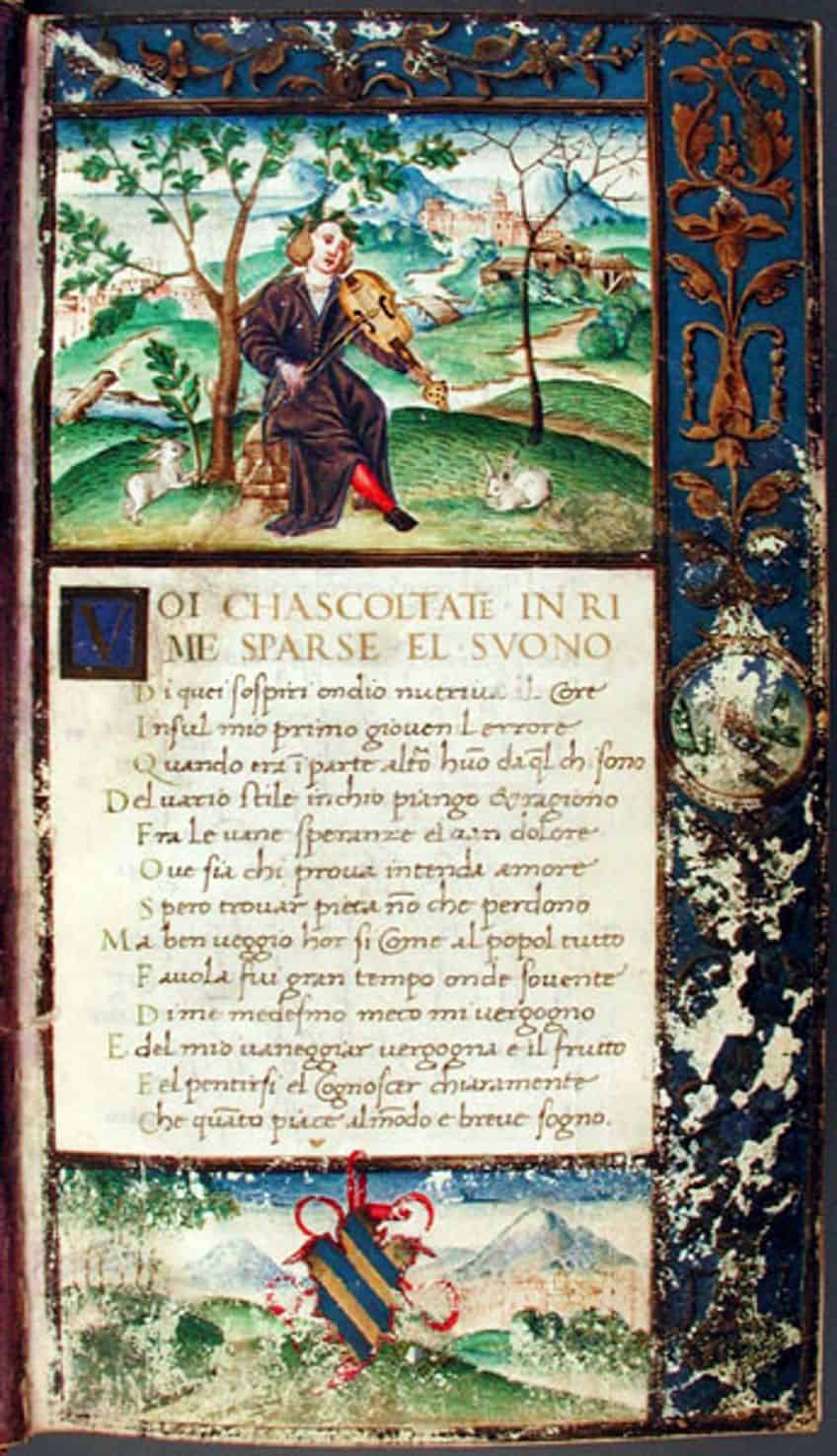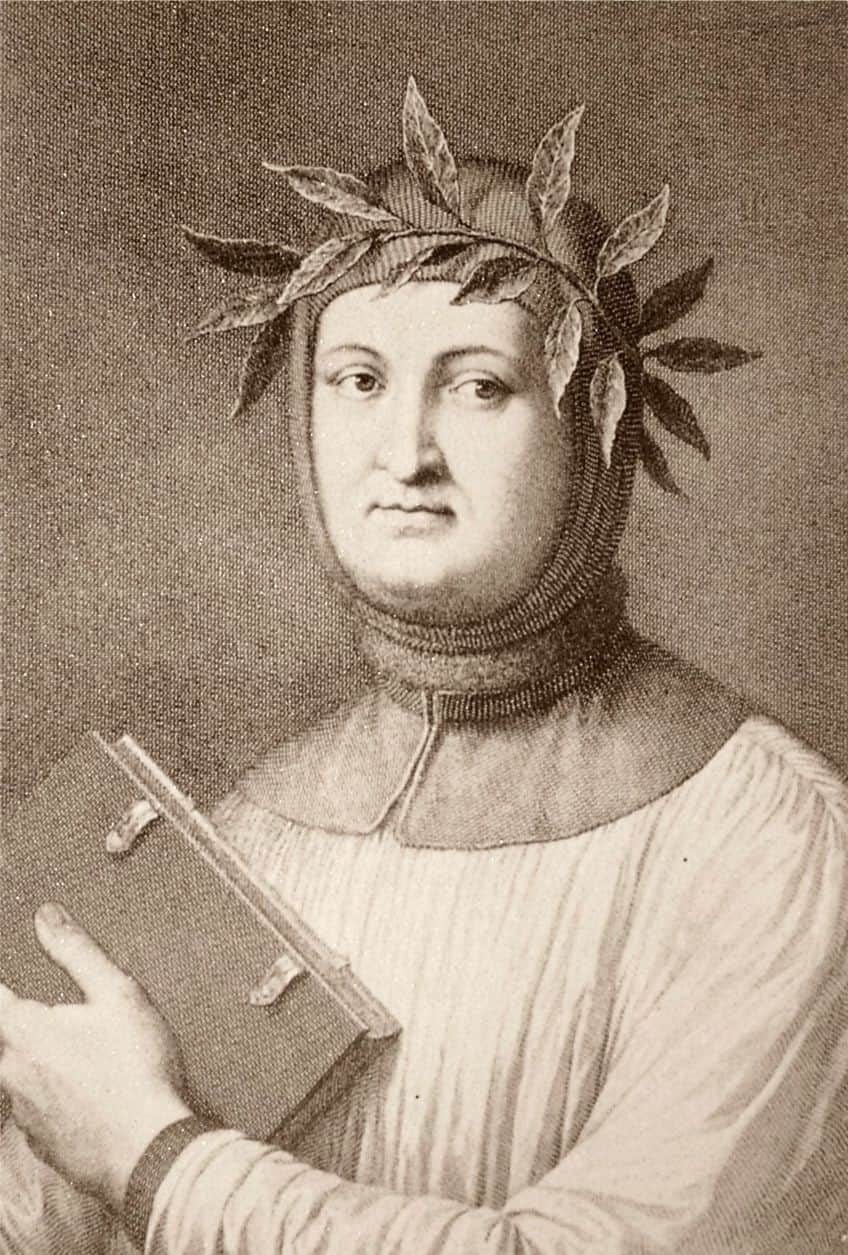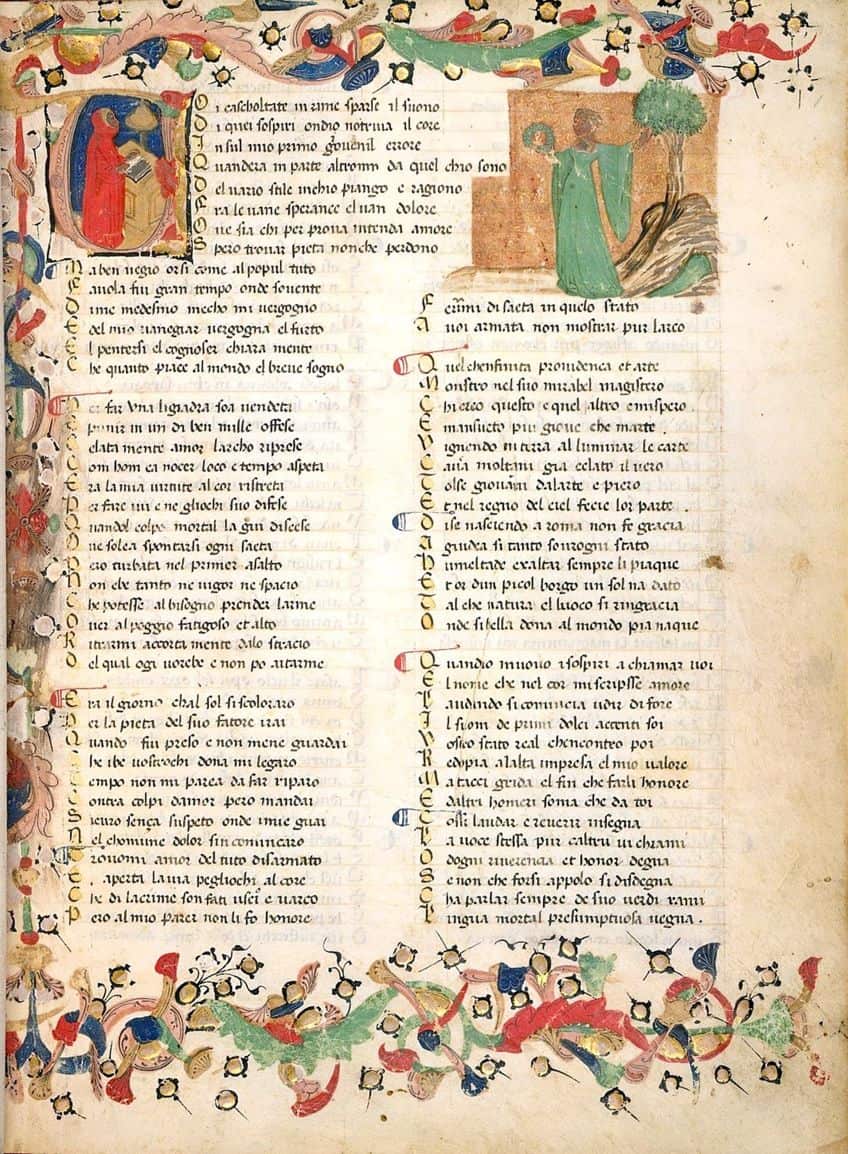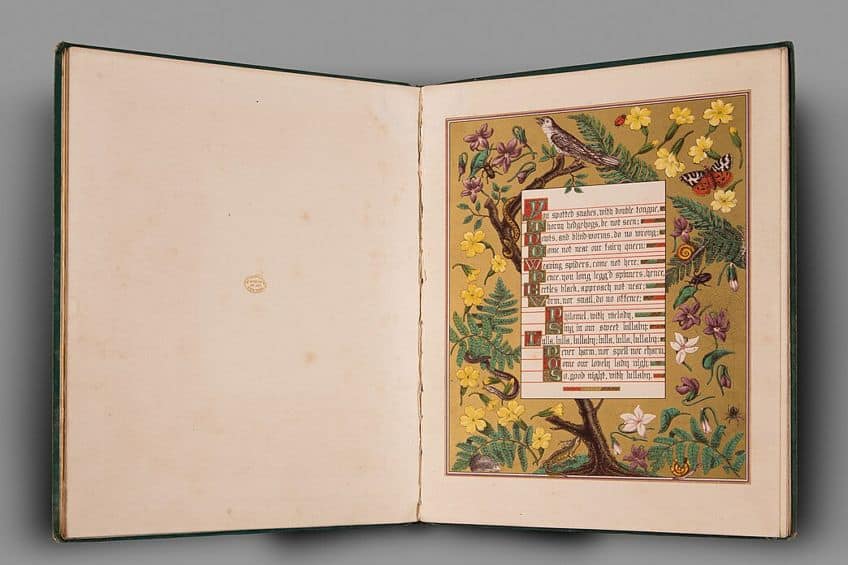What Is a Sonnet? – All You Need to Know About Sonnets
What is a sonnet? How many types of sonnets are there? What’s the easiest way to tell if a poem is a sonnet? Each of these questions are worthy of our time and attention, and so that is what each of these questions will receive over the course of this article. We will discuss the characteristics of sonnets, some of the major types of sonnets, sonnet topics, and more. So, if you too wish to learn about this famous poetic form, then keep reading.
What Is a Sonnet?
It is quite possible that this particular type of poem is the most famous variety in the medium, especially in the English-speaking world. That is why we are going to examine them today in some level of detail. There is no need to keep waiting, let’s dive in and answer the question that has been posed: “What is a sonnet?”.

Understanding the Structure of a Sonnet
When it comes to understanding sonnets, there are several characteristics of sonnets that need to be understood. All sonnets follow certain rules, and without following said rules, they cannot be termed sonnets at all. The most basic of these important aspects is that they are made up of fourteen lines. This is one of the most non-negotiable aspects of the sonnet as other characteristics of sonnets can vary between different types of sonnets.
Within this fourteen-line requirement, sonnets are traditionally made up of an octave and a sestet. Respectively, this means there is typically a structure made up of eight lines, usually two quatrains (or stanzas comprised of four lines), and a six-line structure. However, variations can abound, and many sonnets will not even present these quatrain and sestet structures in a standard stanza structure through separation with line breaks.
This is why the sonnet becomes highly variable.
The way in which sonnets are traditionally presented is immensely different from the way in which they can actually be written. In a standard sonnet, this octave and sestet structure allows for a topic shift within the sonnet in which tone or feeling can change. For instance, a poem could make use of a melancholic tone in its first eight lines so that it can then, in the final six lines, shift the meaning towards a more hopeful tone. However, this is variable, as will be discussed below.
In addition to this, one of the most famous aspects of the sonnet is its rhyme scheme. There are two rhyme schemes for sonnets that are of particular note as they are the most famous: the Petrarchan and Shakespeare sonnet structures. Each of these varieties makes use of its specific rhyme scheme and has its own history, but they are both types of sonnets even if they have vastly different histories.
Each of these types of sonnets will be discussed in more detail below, but it is worth noting here that the Shakespeare sonnet structure is the more famous of the two major sonnet types, or at least this is the case in the English language. This does also make sense seeing as it was the sonnet style that William Shakespeare made use of, and his influence on the development of the English language cannot be easily understated.

However, this does not mean that these are the only two types of sonnets, as there are also forms such as Spenserian and Miltonic sonnets. In addition, there are practically endless varieties of more contemporary sonnets. For instance, with the more widespread application of free verse poetry, in which any set structure is abandoned, the sonnet can be altered and shifted to produce an entirely new rhyme scheme or to have no rhyme scheme at all.
When it comes to poetry, there may be rules, but the rules can easily be altered and broken. In the contemporary era, one does not need to follow any particular structure unless one truly wants to do so. If a contemporary poet wanted to use a traditional Shakespeare sonnet structure, they would be more than able to do so, but they could also abandon all the rules so long as they retain the fourteen-line rule. That is the only real part of the sonnet that always remains. Any more or any fewer lines and it is no longer a sonnet.
The Two Main Types of Sonnets
As has been mentioned, there are two primary types of sonnets. The most famous of these, in the English language, is likely the Shakespeare sonnet structure, but the other is the Petrarchan or Italian sonnet. It would be best to explore both of these types of sonnets in some detail to better understand them and their differences from one another.
As this article is in English, we will start with the sonnet structure most likely to be known: the Shakespearean.
Shakespearean Sonnet (English/Elizabethan Sonnet)
The Shakespearean sonnet goes by several names. It is also known as the English of Elizabethan sonnet because of the language or its origin and the era in which it was prominently produced. However, it is in the figure of William Shakespeare that this particular type of sonnet gains its fame. Before we look at Shakespeare’s more specific involvement in this particular sonnet variety, let’s look at the actual characteristics of this variety of the sonnet.
When it comes to the Shakespearean sonnet, it is generally made up of four separate quatrains before ending on a rhyming couplet. This means that there are three sections of four lines and one with only two. This, as is the case with all types of sonnets, ultimately equals to a fourteen-line poem.
In the more traditional form of the Shakespearean sonnet, these different individual components are usually not separated by any line breaks and so there are no stanzas. This is not necessarily a rule though, but it is the way that Shakespeare presented his particular poems, and so it has become the more famous way of presenting a Shakespearean sonnet. However, regardless of the lack of line breaks, there is still a structure to the way in which these sections are arranged.

In the most standard sense of the term, these quatrains and the ending couplet are arranged in a rhyme scheme that helps us to see their quatrain structure as the Shakespearean rhyme scheme is as follows: ABAB CDED EFEF GG. Each line of the quatrain structures rhymes with the alternating line and this is arranged in a set of three quatrains. However, this is not the only way in which the Shakespeare sonnet structure is arranged.
In addition to making use of this more easily noticeable formal structure, sonnets from both the Shakespearean and Petrarchan traditions make use of what is called a volta. This is a shift in the tone or topic of a sonnet, and in a Shakespearean sonnet, this can occur before the rhyming couplet, but it can also appear at the end of the first two quatrains (and thereby produce an octave structure).
This is a common aspect of traditional sonnets, and it can be found in the Shakespeare sonnet structure as a means of producing a certain topical framework. It allows for a sonnet to appear to be about one thing before shifting to change one’s perspective on that thing. For instance, a sonnet could be about death in the beginning but then shift to a celebration of what life we have left.
While this volta can often come at the end of the octave, it can also come with the couplet, and the couplet is one of the most notable aspects of the Shakespearean sonnet.
The poem ends on a double rhyme, and this calls specific attention to those final two lines. This allows a perfect setup whereby the last two lines of a Shakespearean sonnet can impart some final and often poignant point and thereby conclude the sonnet.
Lastly, one of the most prominent aspects of traditional Shakespearean and Petrarchan sonnets is the way in which meter is used. This is the poetry technique that relates to how stressed and unstressed syllables are used. The standard meter that can be found in a Shakespeare sonnet structure is called iambic pentameter, and this means that the first syllable is unstressed while the second is stressed. This is then repeated throughout a line.
This has been an explanation of the structure of a Shakespearean sonnet, but why is it named after him? He did not invent it and it does also hold the name “Elizabethan sonnet”, which locates it within a more specific historical era. However, the reason that William Shakespeare’s name has become attached is because of the publication of his sonnets in 1609. This collection of 154 sonnets would become the most famous collection of sonnets in the English language, and his name would forever become attached to the form.

Some of the most well-known of all the poems by this figure are sonnets. In particular, those such as Sonnet 18, also known as “Shall I compare thee to a summer’s day”, and Sonnet 130, also known as “My mistress’ eyes are nothing like the sun”. While Shakespeare did write poems that were not sonnets, all of his most famous poems very much conformed to this same structure. And so his name has become forever affixed to the form.
Petrarchan Sonnet (Italian Sonnet)
The Petrarchan sonnet is not quite as famous as the Shakespearean sonnet in the English language, but it is also named for a famous poet who did not necessarily invent the structure: Francesco Petrarca (who is commonly anglicized under the name Petrarch). The reason this particular poem structure does not necessarily appear as often in English is because the rhyme scheme is far more noticeable in Italian than in English. It is not a sonnet structure that is particularly tuned to the English language.
There are several shared features though. In the more traditional Petrarchan sonnet, it also makes use of iambic pentameter and also contains a volta, although the volta in this sense traditionally follows the octave as there is no rhyming couplet that can be relied upon as it can in the Shakespeare sonnet structure. And the line number is also, of course, always the same regardless of what type of sonnet is on display.
There are always fourteen lines.
The primary difference is in the rhyme scheme. This particular rhyme scheme is more geared towards a definitive octave and sestet structure with it being arranged as ABBAABBA CDECDE. However, variations in this rhyme scheme do also occur, but this is the more traditional form. As can also be seen, this rhyme scheme with its two distinct sections is better geared towards a volta after the eighth line.

Petrarch himself had an immense influence on poetry and the humanist tradition. Some of his most famous poems were collected in the work known as Il Canzoniere. Some aspects of this collection will be discussed in more detail below. However, there have been other noted figures who have made use of the Petrarchan sonnet structure, even English figures such as John Milton and William Wordsworth.
Themes and Topics in Sonnet Poetry
Sonnets, like all poems, do not have to be about anything in particular. However, sonnet topics are usually focused on certain areas over others. For instance, it is common for a sonnet to explore a single thought or feeling in some level of depth rather than attempting to cover a larger breadth of topics within a single poem.
Traditionally, some of the most famous sonnets have been about love in some sense. Many of the most famous poems by both Shakespeare and Petrarch were focused on love and affection. However, this does not have to be the case.
During the Romantic era, there was often a fixation on the natural world over the supposedly civilized world, and these ideas were easily applied to the sonnet structure.
That being said, sonnet topics can be whatever the poet decides. For instance, one of the most famous non-Shakespearean sonnets in English is Ozymandias by Percy Bysshe Shelley (1818), and it is about the legacy of historical figures and accomplishments, and that all is eventually washed away in the sands of time.
Famous Sonnet Sequences
Sonnet sequences are, as the name may suggest, sequences of sonnets that are arranged in some kind of a formation. We are going to look at two of the most famous examples of sonnet sequences below.

Shakespeare’s “Sonnets” (1609 Collection)
Shakespeare’s immensely famous 1609 publication of his sonnets rocketed the fame of the English sonnet, and there are two main sequences within this collection of sonnets. The first is the Fair Youth sequence, and these sonnets are aimed at an attractive young man who is, over the course of the first 126 sonnets of the 154-sonnet collection, to settle down, get married, and have children.
Many of the sonnets in this sequence focus on the ephemerality of beauty.
The second sequence in this collection is focused on a character known as the Dark Lady. This figure is a woman who is described in typically unflattering terms, but she is seen as beautiful in other ways while also being a sexual being. Many of these poems focus on topics such as the realism of beauty and jealousy.
Petrarch’s “Il Canzoniere” (Song Book)
This is a collection written by the famed Italian poet Petrarch, and it predominantly is focused on a woman named Laura. Not every poem in this collection was a sonnet, but the majority of them were written in this form, and this allowed this collection of poems to be about this unrequited love that he has for this figure. One of the major aspects of the work of Petrarch was that he was adept at capturing human emotions, and this collection shows his more unstable emotional responses to this love that he felt.

Modern Sonnets: Revitalizing the Classic Form
Many of the most famous sonnets may have been far more ancient ones, but this does not necessarily have to be the case. The sonnet has still persisted into the modern day, and so we are going to look at two sonnets that are far younger than those written by figures such as Shakespeare and Petrarch.
These poems also make use of sonnet topics that would likely never have been explored by ancient poets.
Sonnet (1999) by Billy Collins
| Date Published | 1999 |
| Type | Petrarchan-style |
| Rhyme Scheme | NA |
| Meter | Variable |
| Topic | Sonnets |
This sonnet, which even has the name of the type of poetry, is part of the far more contemporarily used literary technique known as metatextuality. This sonnet is about sonnets. It is far more carefree and humorous as it states things like “All we need is fourteen lines” and “into the final six where all will be resolved”. This poem calls sonnet techniques to attention and somewhat mocks them, such as stating that there has to be a rhyme scheme even though this particular sonnet does not actually make use of a rhyme scheme. This contemporary sonnet may just go to show that love and other emotions are not the only ones that a sonnet can explore. They can be about anything.
First Alzheimer’s Sonnet (2004) by Marilyn Nelson
| Date Published | 2004 |
| Type | Non-standard sonnet |
| Rhyme Scheme | None |
| Meter | Iambic pentameter |
| Topic | Alzheimer’s disease |
While many ancient sonnets love to be about love and beauty, they are not often about the breakdown of a person’s mind. In this particularly poignant poem, Marilyn Nelson takes aim at what Alzheimer’s disease does to a person. Lines such as “Alzheimer’s,/like other griefs, is a kind of theft” and “The thief steals what we’ve always taken for granted” use the metaphor of a thief to accuse this degenerative disease of taking from us what it should never be allowed to take.
A topic like this is likely far darker than the kind that William Shakespeare ever wrote, but it’s real and heavy, and a sonnet can explore any topic the poet so chooses.
The Enduring Legacy of Sonnet Poetry
The sonnet has become an incredibly important part of the history of poetry, and it has also likely become the most famous of all poetic forms in the Western world because of it. This is particularly the case in the English language where the Shakespearean sonnet has reigned supreme for centuries. Numerous poets have tried their hand at making use of the sonnet structure to express feelings and ideas, and the love sonnet has become a particularly enduring part of that legacy.

For many in the English-speaking world, the sonnet is likely strongly associated with high school English classes as Shakespeare’s most famous sonnets have been studied for decades as a standard part of English curricula around the world. The legacy of the sonnet cannot be understated, and in the English language, the specific influence of the Shakespearean sonnet can definitely not be understated.
However, the sonnet has persisted into the present day, and it has often been used as a means of expressing a certain inspirational tone. This is the way in which the form has been adopted by many contemporary sonnet poets who have decided to adopt this ancient form of poetry. The sonnet is likely here to stay, and its longevity has yet to slow down.
With that, we have come to the final stop on our journey through the world of the sonnet. We have examined the question, “What is a sonnet?”, and ultimately come away with a discussion of a variety of types of sonnets, sonnet topics, characteristics of sonnets, and more. The sonnet is one of the most famous poetic forms, and while its history is ancient at this point, its future is still being written.
Frequently Asked Questions
What Is a Sonnet?
A sonnet is a type of poetry. One of the most well-known attributes of this form is that it makes use of fourteen lines. In the more traditional sense, a sonnet also makes use of a meter, usually iambic pentameter, and a set rhyme scheme, such as the Shakespearean and Petrarchan sonnet rhyme schemes. Sonnet topics usually entail the exploration of a singular thought or idea that can be expressed through its short duration. These poems are often associated with love.
What’s the Easiest Way to Tell If a Poem Is a Sonnet?
It can be quite simple to identify a sonnet. They usually make use of iambic pentameter, a set rhyme scheme, and feature a turning point in the structure known as a volta. However, all of these aspects can be variable and altered if needed. For this reason, the easiest way to tell is if it makes use of a fourteen-line structure. If it does not have fourteen lines, it is not a sonnet.
What Are the Different Types of Sonnets?
There are two types that are the most famous types. These include Shakespearean and Petrarchan sonnets. Each of these makes use of their own specific rhyme schemes and structures. However, there are also other forms, such as Spenserian and Miltonic sonnets. One could also create more contemporary forms with variable or absent structures.
Who Are Some Famous Sonneteers in History?
The most famous of them all are likely those after whom the most famous types of sonnets are named: William Shakespeare and Petrarch. However, other notable figures include John Milton, Elizabeth Barret Browning, and William Wordsworth. Many poets have made a name for themselves over the years by writing sonnets.
How Long Is a Typical Sonnet?
These are not particularly long poems at only fourteen lines. However, this is only the line number of a sonnet. The length of each individual line could, theoretically, be altered and changed to suit the specific needs of the particular sonnet in question. For this reason, there is no set syllable count for a sonnet, and so the length can vary.
What Is the Difference Between a Shakespearean and Petrarchan Sonnet?
The primary difference between these two immensely famous types of sonnets is that they make use of different rhyme schemes. The Shakespearean uses an ABAB CDCD EFEF GG structure and the Petrarchan sonnet uses an ABBAABBA CDECDE rhyme scheme. This is the most notable difference between these types of sonnets.
Justin van Huyssteen is a freelance writer, novelist, and academic originally from Cape Town, South Africa. At present, he has a bachelor’s degree in English and literary theory and an honor’s degree in literary theory. He is currently working towards his master’s degree in literary theory with a focus on animal studies, critical theory, and semiotics within literature. As a novelist and freelancer, he often writes under the pen name L.C. Lupus.
Justin’s preferred literary movements include modern and postmodern literature with literary fiction and genre fiction like sci-fi, post-apocalyptic, and horror being of particular interest. His academia extends to his interest in prose and narratology. He enjoys analyzing a variety of mediums through a literary lens, such as graphic novels, film, and video games.
Justin is working for artincontext.org as an author and content writer since 2022. He is responsible for all blog posts about architecture, literature and poetry.
Learn more about Justin van Huyssteen and the Art in Context Team.
Cite this Article
Justin, van Huyssteen, “What Is a Sonnet? – All You Need to Know About Sonnets.” Art in Context. September 6, 2023. URL: https://artincontext.org/what-is-a-sonnet/
van Huyssteen, J. (2023, 6 September). What Is a Sonnet? – All You Need to Know About Sonnets. Art in Context. https://artincontext.org/what-is-a-sonnet/
van Huyssteen, Justin. “What Is a Sonnet? – All You Need to Know About Sonnets.” Art in Context, September 6, 2023. https://artincontext.org/what-is-a-sonnet/.








